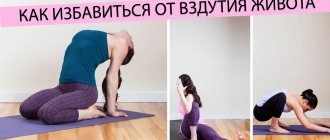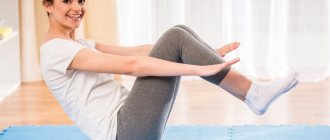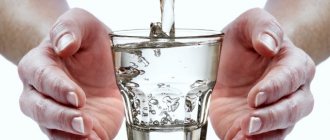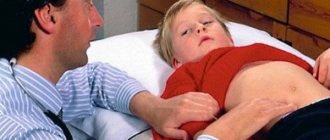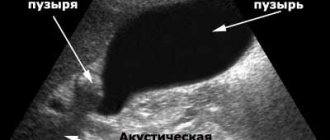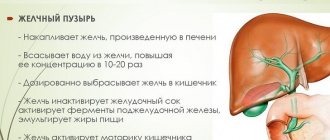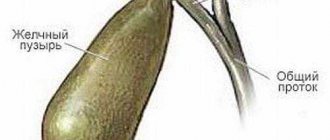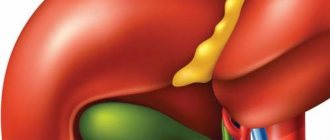Lack of full exercise and physical activity, long sedentary work without changing body position often causes stagnation of bile in the biliary system. There are several therapeutic gymnastic complexes for treatment that alleviate the condition of inflammation in the gallbladder, help improve the movement of bile and motility of the intestinal tract. Doctors note that performing the complex is especially effective in the morning, since during sleep there is no food intake and no bile production occurs.
Why do you need charging?
Exercises are aimed at improving the flow of bile and more:
- spasm relief;
- increased metabolism;
- elimination of cholestasis;
- strengthening the nervous system;
- restoration of cardiovascular functions;
- improvement of gastrointestinal tract functions.
This type of exercise can strengthen the abdominal muscles so that they can support the internal organs well. Gymnastics for the gallbladder develops diaphragmatic breathing, improves blood circulation in the biliary system, and helps restore contractile function. Prolapse of the internal organs leads to kinking of the gallbladder, so abdominal exercises restore its normal functioning. The abdominal wall muscle after these exercises is strengthened and supports the organs in a physiological position.
Exercise is more effective if it is accompanied by yoga and daily walking in the fresh air before bed. Exercises for stagnation of bile in the gallbladder have no specific contraindications. But they are not performed during the acute course of the disease.
Training for bending the gallbladder
If the gallbladder is bent, you need to reconsider your physical activity. The patient should avoid sudden movements and not carry heavy objects. This can lead to twisting of the organ around its axis. But this does not mean that you should not engage in physical training at all. Gymnastics for bending the gallbladder should be gentle, but performed daily.
You need to lie down on your back. Then take a deep breath so that the stomach is completely retracted. You need to hold your breath for twenty to thirty seconds. Then relax and repeat a few more times.
You must remain in a lying position. Then bend your legs and press them to the chest area. Then let go again. The workout should be repeated five to seven times.
Remaining in the original position, clasp your legs with your hands. Then you need to rock on your back for one or two minutes.
Curling and formation of gallstones are common problems. The patient may not know about the existence of the disease for a long time. And only the next ultrasound examination can show pathology.
Physical activity allows you to eliminate stagnant processes and restore the functioning of internal organs. However, before starting special exercises, it is recommended to consult a doctor and undergo an examination to rule out an acute disease.
Exercises while standing
Before you start charging, you need to walk around for a couple of minutes. Next, perform a breathing exercise. Inhale - pull in the stomach, exhale - stick out (2 min.).
This was a warm-up, then there are the main exercises.
- Movements should be done slowly. Feet shoulder-width apart, arms raised and stretched upward - inhale. We lower our hands as low as possible, reaching the floor - exhale.
- Rise up on your toes, arms up - inhale. We lower our arms along the body and exhale.
- Place your hands on your belt, squat not deeply, and stand up.
- The hands are there. You need to bend alternately forward and backward. There is no need to monitor your breathing.
- The position is the same, perform a circular rotation of the body. Breathing is not monitored.
- Feet shoulder width apart. Bend over, touch your left foot with your right hand and vice versa.
- Hands are placed on the belt. “Twist” the torso to the right, then to the left.
- Relaxation. Hands smoothly upward, then slowly lowered down.
The movements are repeated 5 times, monitoring breathing.
Liver workouts
The liver is one of the important organs. Its main property is to cleanse the body of harmful and toxic substances. To help her with this, you need to perform exercises for the liver.
Gymnastics should be done in the morning, in a well-ventilated area. First you need to lie on your back, stretch your legs and place your arms along your body. Then you should do an exercise that is similar to riding a bicycle. That is, you should alternately bend and straighten your legs. This must be done within thirty seconds.
Exercise "scissors"
Then you can lie down on your left side. Raise your right arm and leg at the same time and hold for a few seconds. Take the original position and relax for a few seconds. Repeat the workout four to five times.
You need to take a lying position and place your hands on the buttocks. Then you need to move your legs, raise them above the floor about ten centimeters higher and perform the “scissors” exercise.
You need to get on all fours so that your heels touch the floor. You need to stay in this position for one to two minutes.
After this, you need to stand up and put your hands on your belt. Then do about twenty squats.
Such exercises for the liver and gallbladder can improve the functioning of the biliary tract. There is an improvement in the functioning of internal organs, stimulation of bile formation and elimination of stagnant processes in the liver and gall bladder.
Lying down
Next, do the exercises while lying on your back with your legs stretched out. This is the starting position. Then the following is required.
- Lie down and do breathing exercises.
- Alternately pull your lower limbs towards your stomach, sliding your feet along the floor.
- The legs bent at the knees are clasped with your arms and pulled to your chest. Raise your head and reach towards your knees, relaxing.
- The legs bent at the knees are alternately raised upward.
- Next, you need to place both limbs bent at the knees alternately to the right or left.
- Bend your leg at the knee, use your hands to pull it to your stomach, release it, raise it, and lower it again. Change legs and do the same exercise.
- Raise the straight leg up, reach for the toe with your hands, and lower it. Do the same exercise with the other leg.
- Straight legs are raised upward. Then you need to clasp them with your hands and stretch your head towards your knees. Then take i.p.
- Raise your legs bent at the knees and rotate them alternately forward and backward, like pedaling a bicycle. Perform 1 minute in each direction.
They perform breathing exercises again and lie on their right side. Such a complex is shown below.
- Bend your knees, one hand under your head, the other in front. Raise your arm and bent leg up (inhale), lower it (exhale). Do the same exercise while lying on the other side.
- The same thing, but the leg needs to be moved back.
- The exercise is performed as the previous one, but after moving the leg back, you need to pull the limb bent at the knee towards the chest. Repeat the exercise with the other leg.
Next, roll over onto your stomach and take your starting position. Then the next one.
- Do breathing exercises.
- Lying on your stomach, imitate swimming in the breaststroke style. Legs, arms, as well as head and shoulders should be lifted off the floor.
- From a lying position, go to all fours, and then to your heels. Perform squats springily.
- Standing on all fours, swing your leg back, and then pull it to your chest. You need to do the same with the other leg.
- Place your hands on the floor and rise on your toes, lifting your pelvis up.
Finish the set of exercises with breathing exercises. Repeat all exercises 5 times.
Kiryushka
—Search by diary
-Friends
— Regular readers
-Statistics
Sunday, April 14, 2013 19:18 + to quote book
Insufficient physical activity and a sedentary lifestyle are one of the reasons for stagnation of bile in the gallbladder. There is special gymnastics for the gallbladder, which can help with cholecystitis, will help activate blood circulation in the abdominal area, the outflow of bile and improve intestinal motility. It is very useful to do these exercises for the gallbladder in the morning, since at night a person does not eat and bile is not secreted.
Therapeutic gymnastics includes breathing exercises that develop diaphragmatic breathing, which is especially useful for the abdominal organs. The complex includes exercises that provide a certain load on the abs, as well as exercises performed on the right side and abdomen. It’s good if you buy a large ball for practicing, on which you can lie on your stomach and swing back and forth, thereby increasing blood circulation both in the gall bladder and in the liver. The complex includes various turns and bends of the body, which are also useful for activating the work of the gallbladder and the secretion of bile.
1. Start a set of exercises for the prevention of cholecystitis by walking in place, raising your knees high and vigorously waving your arms - for half a minute.
2.Then you should do a breathing exercise using the diaphragm: place one hand on your stomach and inhale - the stomach inflates, then exhale - the stomach retracts. The hand will help control the retraction and inflation of the abdomen. Breathe like this for 1-2 minutes. Having completed a short warm-up, we now move on to the main part of the lesson.
3.Standing still, arms down, feet shoulder-width apart. As you inhale, raise your arms up, stretch, then bend down, your arms reach towards the floor (you can bend your knees slightly if it is difficult for you to do the exercise with straight legs), touch your hands to the floor (in the future, try to put your entire palm on the floor) – exhale. Repeat the exercise 5 times.
4. The starting position is the same. Rising on your toes, raise your arms up - inhale, lower yourself onto your toes, while simultaneously returning your arms to their place through the sides - exhale. Repeat the exercise 5 times.
5. The starting position is the same, just place your hands on your belt. Do 5-10 squats, but you don’t need to squat deeply so as not to put too much strain on your knees, especially if they hurt. You need to breathe like this: as you exhale, do a squat, and return to the starting position as you inhale. You can rest your hands on the back of a chair while doing this exercise.
6. The starting position is the same, i.e. hands on the belt. Bend your torso forward and then back. Perform 5 bends in each direction. Breathing is voluntary.
7. The starting position is the same. Bend your torso left and right. Perform 5 bends in each direction. Breathing is voluntary.
8. The starting position is the same. Make circular movements with your body clockwise - 5 rotations and then counterclockwise for 5 rotations. Breathing is voluntary.
9. Stand against the back of a chair or table and holding onto them with your hand, begin to swing your legs forward and then back. Perform 5 swings with each leg, breathing randomly.
10. Starting position – legs stand slightly wider than shoulders, lower your arms along your body. Leaning forward, touch the floor with your right hand at your left foot, and your left hand goes up. Then do the same by changing the position of your hands. Breathing is voluntary.
Massage
Gallbladder massage can be done only after an ultrasound examination. It will show whether there are stones in the internal organ, which can lead to blockage of the bile ducts and cause hepatic colic. If there are no such restrictions, then massage yourself. It promotes increased peristalsis of the gallbladder, speedy evacuation of bile through the ducts. Massaging movements also ensure relaxation of the muscles of this internal organ.
You need to do the massage while lying on your back.
This is a rather painful procedure. First, you need to feel the pain point in the right side under the ribs and, putting your fingers in a bun, massage around it. Movements are carried out clockwise for at least six circles.
Then you should take a sitting position. Inhaling, strongly protrude your stomach, press your fist in the liver area and move from bottom to top. As you exhale, pull in your stomach and release the pressure with your fist. Hold your breath for 5 seconds. Repeat 5 – 6 times.
Then, lying on your back, as you exhale, draw in your stomach as much as possible and massage it under the right rib with your palm. Make circular movements clockwise. As you inhale, release the pressure. Repeat for 2 minutes.
Training for biliary dyskinesia
Performing exercises will normalize the functioning of the digestive system, stimulate blood flow and increase the excretion of bile.
To carry out exercise therapy, you need to take a chair and a mat. The first exercise is performed using a chair. It is necessary to position yourself on it so that your back is level. There should be no tension, so you should relax. Inhale while strongly drawing in your stomach. Then you should hold your breath for ten seconds. Gradually exhaling air, you need to stick out your stomach.
Take a lying position. Place one hand on the chest area, the other on the stomach. You need to inhale air gradually through the nasal cavity. At the same time, the stomach should inflate. Stay in this position for a few seconds. Then exhale through your mouth, but at the same time your stomach should retract.
Now you need to sit on all fours and take a deep breath. You need to exhale sharply and raise your right leg to your left hand, then return to the original position. The exercise is repeated for the left leg.
Take the original pose. As you inhale, you need to raise your right arm up. As you exhale, return to your previous position. Then all movements are repeated for the left hand. The workout must be repeated up to ten times.
It is worth leaning on a chair and performing squats up to twenty times. If it is difficult to train in the first days, then you can start with five times, and increase the load by two to three times every day.
Finally, you need to walk in place for one to two minutes. In this case, it is better to raise your knees high forward so that they touch the abdominal area.
Conclusion
Before performing a set of physical exercises, you need to consult a doctor and undergo an ultrasound scan of the gallbladder and ducts. Physical exercise is dangerous only during exacerbation of the disease.
You need to start charging with a minimum load, gradually increasing it. There is no need to perform all the exercises if the body does not have the appropriate physical preparation. During the passage of the complex you can take breaks to rest. Systematic exercise will strengthen your muscles and help you maintain good health.
Benefits of classes
Exercise therapy for the liver and biliary tract allows:
- relieve spasm of blood vessels and muscles - this fact allows you to speed up metabolic processes and contribute to the rapid restoration of blood flow;
- increase metabolism;
- helps eliminate cholestasis (cholestasis is a decrease in the flow of bile into the duodenum);
- has a beneficial effect on the nervous system of the body;
- improves the functioning of all organs of the gastrointestinal tract;
- promotes rapid recovery of organs after illness;
- reduces the risk of re-development of pathology.
Basic exercises for healing the liver and gallbladder
The main goal of gymnastics is to eliminate or reduce bile stagnation. This condition is often promoted by insufficient development of the abdominal muscles and a sedentary lifestyle.
Sports activities should be carried out in the morning, the room should be well ventilated. This contributes to the greatest saturation of cells with oxygen and improved metabolism.
Is it possible to play sports with cholecystitis?
Chronic cholecystitis manifests itself against the background of biliary dyskinesia, which provokes stagnation of bile, inflammation of the bladder, and in the future a stone may even form. The disease is characterized by pain in the area of the organ, radiating to the right side and under the shoulder blade. Chronic cholecystitis may appear (exacerbate) under the influence of such factors:
- bile stagnation;
- hypothermia;
- bacterial flora;
- eating fatty, spicy foods;
- inflammation of other organs (tonsillitis, pneumonia).
Another reason for stagnation of bile (with subsequent exacerbation of cholecystitis) is physical inactivity and muscle weakness associated with it, especially weakness of the abdominal muscles. Therefore, any exercise therapy complex for cholecystitis has the following goals:
- improvement of metabolism;
- normalization of the gastrointestinal tract;
- activation of blood circulation in the abdominal area;
- restoration of peristalsis of the gallbladder and its ducts.
Therefore, sports and physical education are mandatory components of preventing exacerbation of the disease and they are not only possible, but also necessary to do.
How to exercise with cholecystitis
When performing exercises, the following conditions must be observed.
- The room in which the lesson is held must be well ventilated. If the room is stuffy or hot, exercise will only cause irritation and premature fatigue. Temperature - 16-18°C.
- You should not watch TV or talk to anyone during class.
- It is better to perform exercises with music: it can be cheerful and rhythmic at the beginning of classes and calmer at the end.
When practicing exercise therapy, it is very important to choose starting positions that maximize the outflow of bile. The most comfortable position is on the left side or on all fours, since in these positions the outflow of bile is facilitated by gravity. If pain occurs in the gallbladder area when performing exercises, then the starting position for the exercises can be changed by doing them standing or lying on your back.
When can you start training?
Against the background of a pronounced exacerbation of pancreatitis, a person’s serious condition does not allow him to exercise even moderate physical activity. The patient experiences intense girdle pain in the upper abdominal cavity, nausea, vomiting, and diarrhea. Due to dehydration, general weakness, headaches, and shortness of breath occur. During this period, any loads should be completely eliminated.
Gradual activation is allowed to begin after the condition has stabilized: pain has been relieved, vomiting and diarrhea have stopped. You can start training with breathing practices: they should be within the capabilities of a weakened patient and will give the necessary impetus to normalize well-being, accelerating recovery processes. As strength increases, active physical training is added, starting with a minimum duration, so as not to overwork the patient. Other loads (walking, swimming, Pilates) can be added after the condition is completely normalized.
Carefully!
For diseases of the pancreas, abdominal exercises are contraindicated - they increase pressure in the common bile and pancreatic ducts, provoking early activation of digestive enzymes and the development of inflammation of the organ.
Treatment of the pancreas is a long process. Acute pancreatitis often becomes chronic, and then in the future it is necessary to regularly perform a complex of physical therapy for preventive purposes.
The purpose of physical therapy
Exercise therapy for chronic cholecystitis tones the central nervous system, stabilizes metabolic processes and increases overall resistance to stress factors, physical and mental stress.
Exercise in remission also has the following effects:
- train breathing;
- reduce the degree of congestion in the gallbladder and neighboring organs;
- reduce spasm of the biliary tract, improving the outflow of bile into the lumen of the duodenum;
- strengthen the anterior abdominal muscles, forming a corset to support the internal organs.
One of the main goals of physical therapy is to improve local and general blood supply to the abdominal organs. To do this, exercises are mainly performed on the back.
What is the drug treatment?
Drugs that improve the flow of bile are prescribed after identifying the pathological processes that provoked this condition.
Therapy consists of the use of the following means:
- To improve the flow of bile, medications are prescribed, mainly herbal based, for example, Holosas, Febichol and others.
- Medicines that relieve itching of the skin (Phenobarbital).
- Vitamin complexes.
- Drugs that remove toxic substances from the body (Ursofalk).
- Antiparasitic drugs.
- Medicines that have a beneficial effect on the membrane of liver cells (Heptral, Silimar).
- In severe cases, plasmapheresis is used to cleanse the blood of toxins.
How to use traditional medicine recipes to improve the outflow of bile acid?
Some herbal decoctions will help cope with stagnation. If the outflow of bile is impaired, a good result is observed after using folk remedies and medications at the same time. But before starting therapy, you should find out the opinion of the treating specialist in this matter.
How to improve the flow of bile from the gallbladder using herbal remedies? Making a plant-based decoction is very easy:
- Prepare dried birch leaves, add 15 grams to 1 glass of boiling water and leave on low heat for 20 minutes; After the broth has cooled, strain through several layers of gauze; drink 1/3 glass 30 minutes before meals.
- Take rose hips and nettle leaves (1 tablespoon each), pre-chopped, add to a glass of boiling water and leave on fire for 15 minutes; You need to drink the decoction throughout the day.

